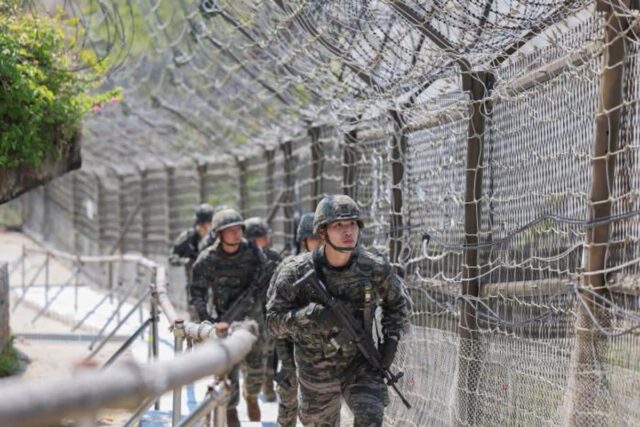
On the night of June 26, the Republic of Korea Marine Corps 1st Division conducted a nighttime integrated fire drill at the Chilpo anti-aircraft shooting range in Buk-gu, Pohang, North Gyeongsang Province, in conjunction with coastal immediate response fire operations.
The training involved approximately 60 personnel from the division’s Maritime Security Battalion, around 100 troops from the Artillery Brigade, and 20 personnel from the Air Defense Company. Various weapons and systems were mobilized, including 60mm and 81mm mortars, K55A1 self-propelled howitzers, K77 fire direction control armored vehicles, towed Vulcan cannons, and counter-battery radar.
The unit focused on mastering tactical actions and combat execution procedures through realistic terrain training, enhancing the firing control capabilities of commanders. This included improving procedures and live-fire skills using illumination rounds and anti-aircraft weapons, as well as training in target detection operations.
The drill began with K55A1 self-propelled howitzers firing illumination rounds. This was followed by simultaneous fire from towed Vulcan cannons, personal firearms, and crew-served weapons toward simulated targets.
After the artillery fire concluded, additional rounds of illumination fire from mortars and live fire from personal and crew-served weapons were carried out. In particular, target detection training using counter-battery radar was conducted concurrently.
Following the drill, each unit held an after-action review to draw key lessons, address shortcomings, and refine their operational plans.
Lieutenant Colonel Oh Jae Geun, commander of the 3rd Battalion of the Artillery Brigade, stated that the nighttime integrated fire exercise instilled confidence that enemy infiltration attempts at night could be neutralized entirely through flawless operations. He emphasized the importance of maintaining realistic training to ensure a robust coastal defense posture.
Meanwhile, before the exercise, the division coordinated with relevant agencies such as Pohang City Hall and the Pohang Coast Guard to inform local residents and control fishing vessels within the maritime firing range. Unit commanders conducted hazard assessments and safety education sessions before, during, and after the training.
















Comments0